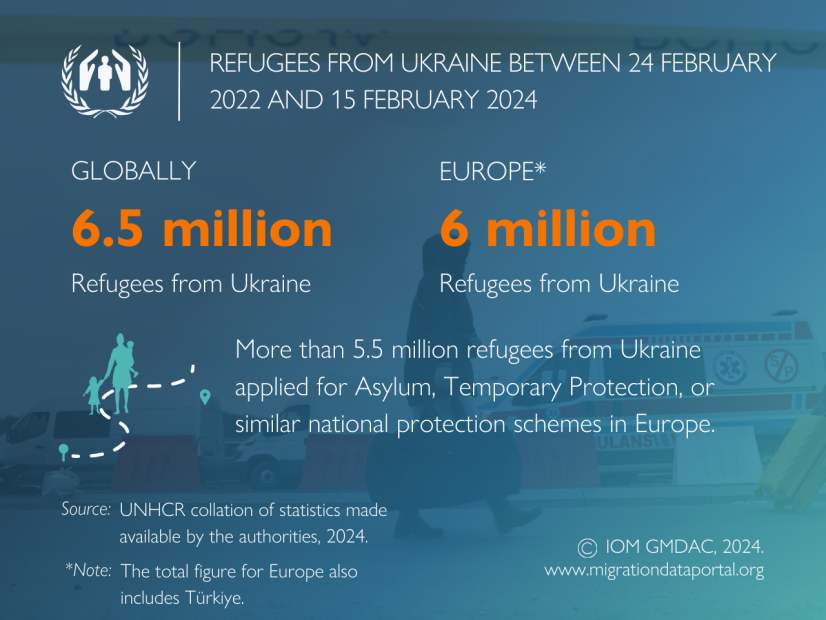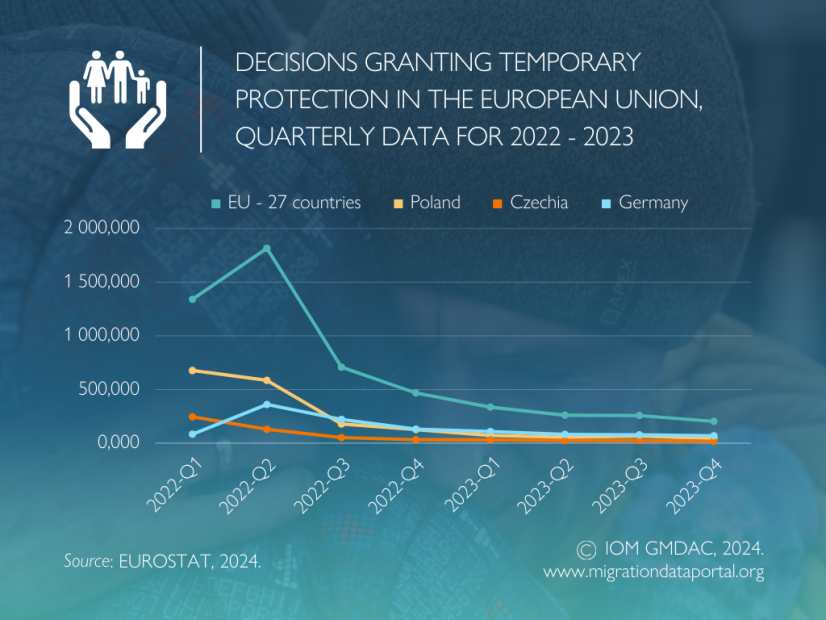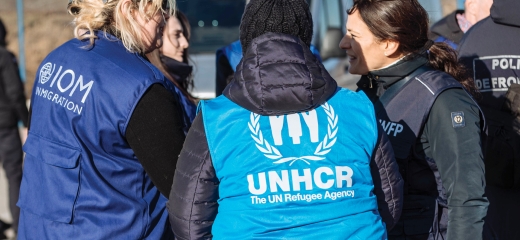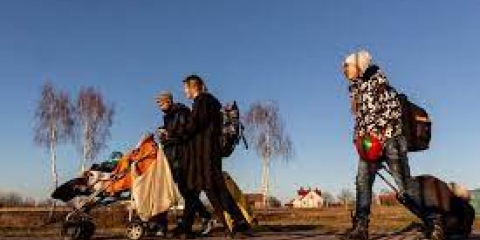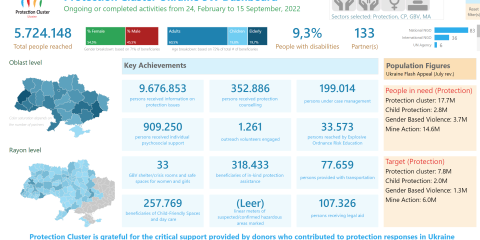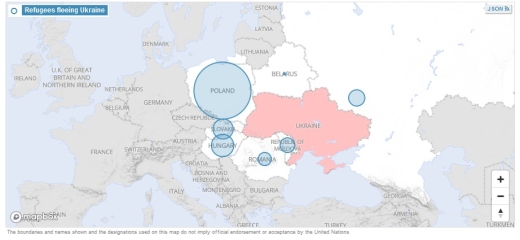
This section gives an overview of currently available data on people on the move from and inside Ukraine: refugees, Third Country Nationals (TCNs), IDPs, vulnerable groups on the move, and data on missing migrants.
Last updated on 20 February 2024
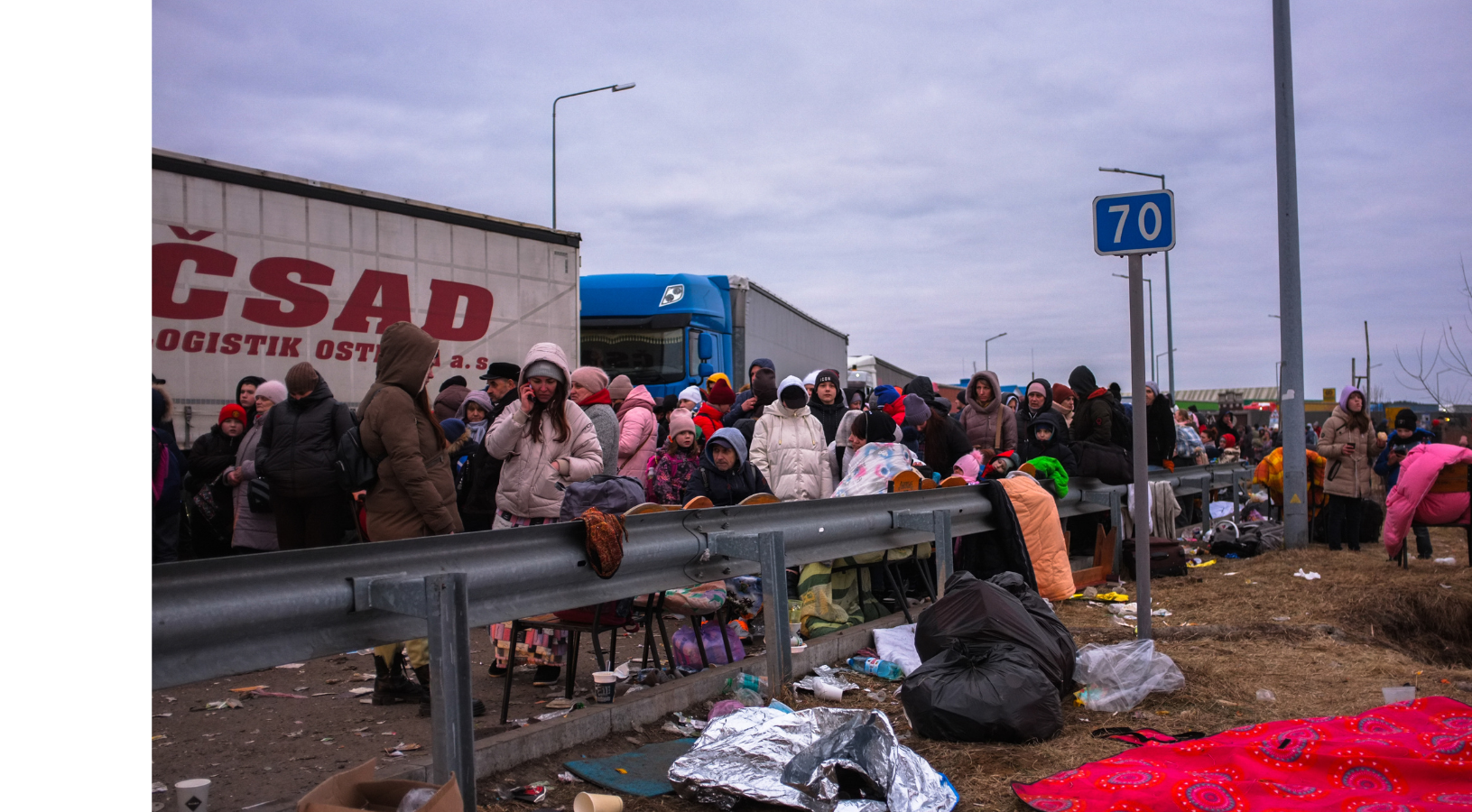
Internally Displaced Persons (IDPs)
As of December 2023, an estimated 3.7 million persons were living in internal displacement within Ukraine, with 80 per cent of all IDPs having been displaced for longer than one year and 39 per cent of all IDPs displaced more than once (IOM Displacement Tracking Matrix, 2024).
Refugees and Asylum Seekers
Between 24 February 2022 and 15 February 2024, nearly 6.5 million refugees from Ukraine have been recorded across the globe (UNHCR collation of statistics made available by national authorities, 2024). Among these refugees, the majority (6 million or 93 %) were recorded in Europe* (ibid). More than 5.5 million refugees from Ukraine applied for Asylum, Temporary Protection, or similar national protection schemes in Europe (as of 15 February 2023) (ibid). The three main countries where people registered for temporary protection or similar national protection schemes were Poland (1.6 million), Germany (1.1 million) and Czechia (590,000) (ibid).
In the European Union, the Temporary Protection Directive was implemented to facilitate the large influx of refugees from Ukraine. Despite a large number of new registrations for temporary protection in EU-27 countries -- especially Poland, Germany and Czechia -- in the first half of 2022, new registrations have slowed since the third quarter of 2022 (EUROSTAT, 2024; OECD; 2023).
******************************************
*Note: The total figure for Europe also includes Türkiye.
Returns [1]
As of December 2023, nearly 4.5 million people had returned to their habitual places of residence (IOM Displacement Tracking Matrix, 2024). This figure includes people who returned after a minimum period of displacement of two weeks since February 2022, regardless of whether they returned from abroad or from displacement within Ukraine[2]. However, individuals who returned from abroad to locations that were not their habitual places of residence in Ukraine are not included in this figure.
[1] The definition of “returns” excludes those who have come back to Ukraine from abroad but who have not returned to their places of habitual residence in country. Source: IOM, 2023.
[2] Minimum of two weeks since February 2022. This cut-off period has been shown as statistically most meaningful in terms of vulnerability following return as compared to the non-displaced population. Source: IOM, 2023.
Third Country Nationals (TCNs)
An estimated 5 million migrants lived in Ukraine as of mid-year 2020 (UN DESA, 2020), and 76,548 international students from 155 countries in 2020 (Ukrainian State Center for International Education, 2023).
As of 24 January 2024, more than 1.2 million TCN border crossings from Ukraine to neighbouring countries and nearly 1.1 million TCN movements to Ukraine from neighbouring countries have been registered since 24 February 2024 (IOM Displacement Tracking Matrix, 2024). This figure refers to the number of crossings and not to the number of individuals.
Source: IOM's Displacement Tracking Matrix, 2024.
The International Organization for Migration (IOM) assists TCNs fleeing the war in Ukraine to return home.
Emotional scenes in Quito, Ecuador, as the relatives of nearly 450 people who fled the war in Ukraine were reunited with their loved ones. IOM provided assistance to returnees aboard the flights organized by the government. Photo IOM/ Ramiro Aguilar
Source: IOM's YouTube Channel, 2022. Third-Country Nationals fleeing the war in Ukraine assisted to return home.
Missing Migrants
Deaths during attempted emigration from Ukraine
Despite the fact that millions of Ukrainians were forcibly displaced across international borders in 2022, only 17 deaths of people fleeing the country were recorded that year and none of them died a violent death. Fatalities among those fleeing Ukraine are extremely low compared to those fleeing other armed conflicts, showing that providing safe and regular routes for those fleeing is essential to prevent migrant deaths.
As of 12 May 2022, IOM’s MISSING MIGRANTS PROJECT has recorded the deaths of 17 people fleeing Ukraine since 24 February 2022. It is likely that more go unrecorded, particularly as distinguishing conflict-related deaths from those attempting to flee the country is challenging.
27 February: a 64-year-old Ukrainian man died due to cardiac arrest at the Palanca border crossing in Moldova.
28 February: an Israeli man attempting to reach the Moldova border was fatally shot some 95km south of Kyiv while driving in a convoy.
5 March: a 61-year-old Ukrainian woman died of a respiratory arrest due to an epileptic seizure while waiting to be admitted into Hungary.
10 March: a boat capsized in Kyiv reservoir, Ukraine during an attempt to flee the country, whereas eight drowned: two dead including a 60-year-old Ukrainian woman, and six missing, including her 4-year-old grandson.
13 March: a Ukrainian woman died after the bus she was travelling along with other Ukrainian refugees overturned in Italy
23 March: a 64-year-old Ukrainian woman has died from blood clots due to immobility while traveling at a gas station in Tàrrega, Spain.
6 April: a Ukrainian man was found dead in a ravine in Pop Ivan Massif Maramureș region at the Romania-Ukraine border of presumed hypothermia.
7 April: a Ukrainian woman died at La Fe Hospital in Valencia, Spain from injuries she encountered in a vehicle accident on 28 March after arriving from Ukraine.
5 May: 2 Ukrainian men are believed to have lost their lives after attempting to reach Romania via the Tisza river crossing. The body of one man was recovered, while the other remains missing and is presumed dead.
VISIT THE MISSING MIGRANTS PROJECT WEBSITE FOR MORE INFORMATION
Vulnerabilities of people on the move from Ukraine
On 24 February, Ukraine imposed a temporary regulation for the period of martial law restricting male citizens in the age group 18-60 years from leaving the country. This regulation has also had crucial impacts on the arrival of more vulnerable people with special protection needs, such as women, children, unaccompanied minors, elderly, wounded or sick people. Reports suggest that these groups are in urgent need of short-term and long-term protection measures, including combatting human trafficking, towards child protection and emergency medical care and psychosocial support.
Third country nationals trying to leave conflict-affected areas, including migrant workers and students who have been living in Ukraine, have reported that they experienced discrimination, racism, verbal and physical violence (OHCHR, 2022; IOM, 2022).

